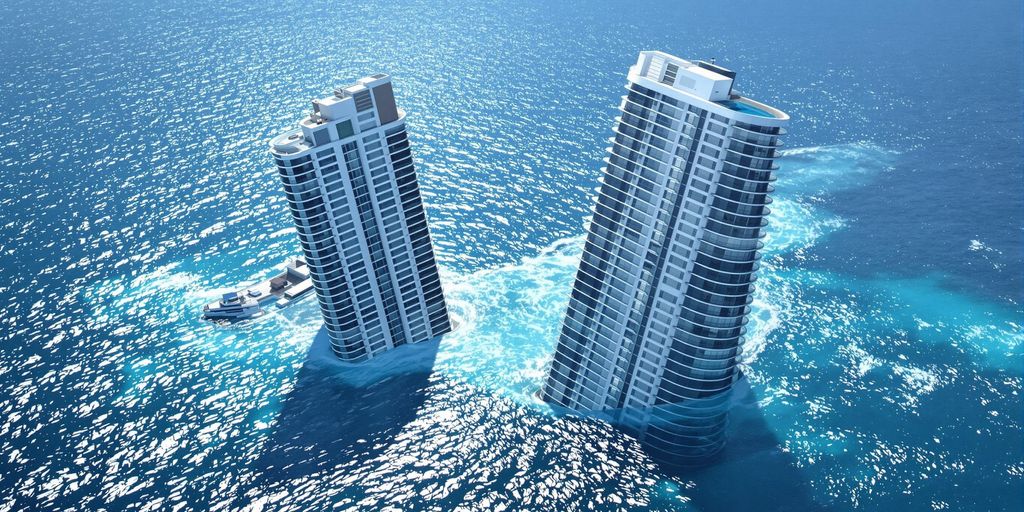Dozens of luxury high-rise buildings along Florida’s South Florida coastline are experiencing subsidence, sinking several centimeters over a multi-year period. A recent study revealed that approximately three dozen condos and hotels in areas like Sunny Isles Beach, Surfside, Miami Beach, and Bal Harbour have settled between 2 to 8 centimeters between 2016 and 2023.
Key Takeaways
- Thirty-five luxury condos and hotels in South Florida have sunk between 2-8 centimeters from 2016-2023.
- The majority of these affected buildings were constructed after 2014.
- The primary cause is believed to be the reconfiguration of sand grains into denser packing within the area’s limestone.
- Construction-related vibrations, groundwater flow, tidal action, and stormwater injection are also hypothesized contributing factors.
Sinking Structures Raise Concerns
A study published in Earth and Space Science, authored by researchers from several prominent universities and research institutions, utilized Interferometric Synthetic Aperture Radar data to identify the extent of the subsidence. The findings indicate that while some settlement is expected during and immediately after construction, the ongoing sinking in these structures is a cause for concern.
Potential Causes of Subsidence
Researchers have proposed several theories for the observed sinking. The primary hypothesis points to the gradual reconfiguration of sand grains within sandy layers interbedded in the local limestone. This natural settling process is believed to be exacerbated by other factors.
Other potential contributors include:
- Vibrations associated with construction activities.
- Changes in groundwater flow.
- Daily tidal fluctuations.
- Stormwater injection systems.
Long-Term Implications
Senior author Falk Amelung noted that while subsidence often slows over time, in some cases, it continues at a steady rate, suggesting the issue could persist. Lead author Farzaneh Aziz Zanjani emphasized that the discovery of these subsidence hotspots was unexpected and highlights the critical need for continuous monitoring and a deeper understanding of the long-term consequences for these coastal structures. The majority of the affected buildings were built after 2014, a period of significant development in the region.


